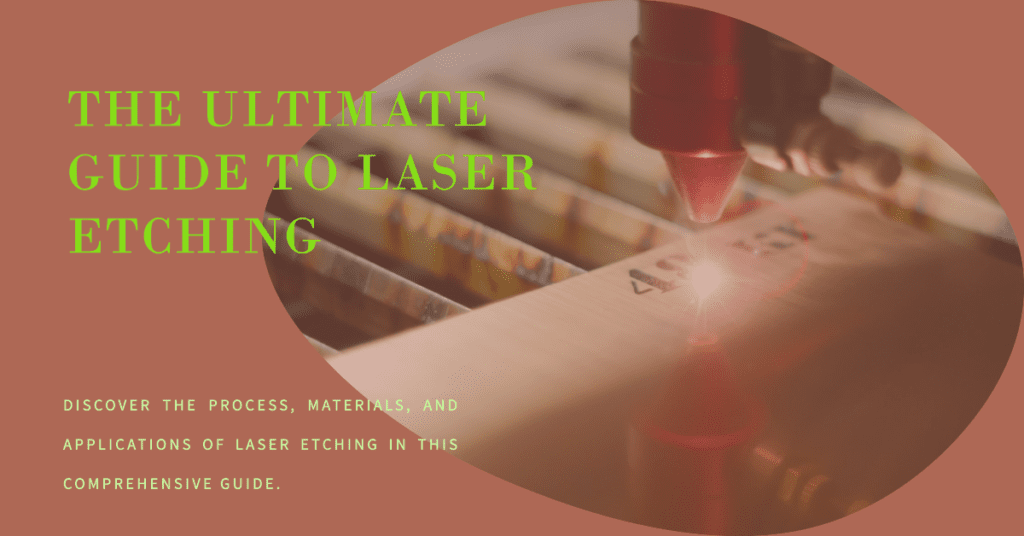
In a world constantly evolving with technology, the demand for precise and long-lasting markings on various materials is higher than ever. This is where laser etching comes into play. Laser etching is a subset of laser engraving, which involves creating marks on a material’s surface by removing a portion of it using a laser beam. The process results in a permanent, high-quality, and highly detailed mark that is resistant to wear and tear. From industrial applications to personalized gifts, laser etching is used in a multitude of fields, revolutionizing the way we mark and identify objects.
This article aims to decode the intricate world of laser etching, its applications, benefits, and how Prolean’s CNC Laser-etching Services stand out in delivering precision and quality.
What is Laser Etching?
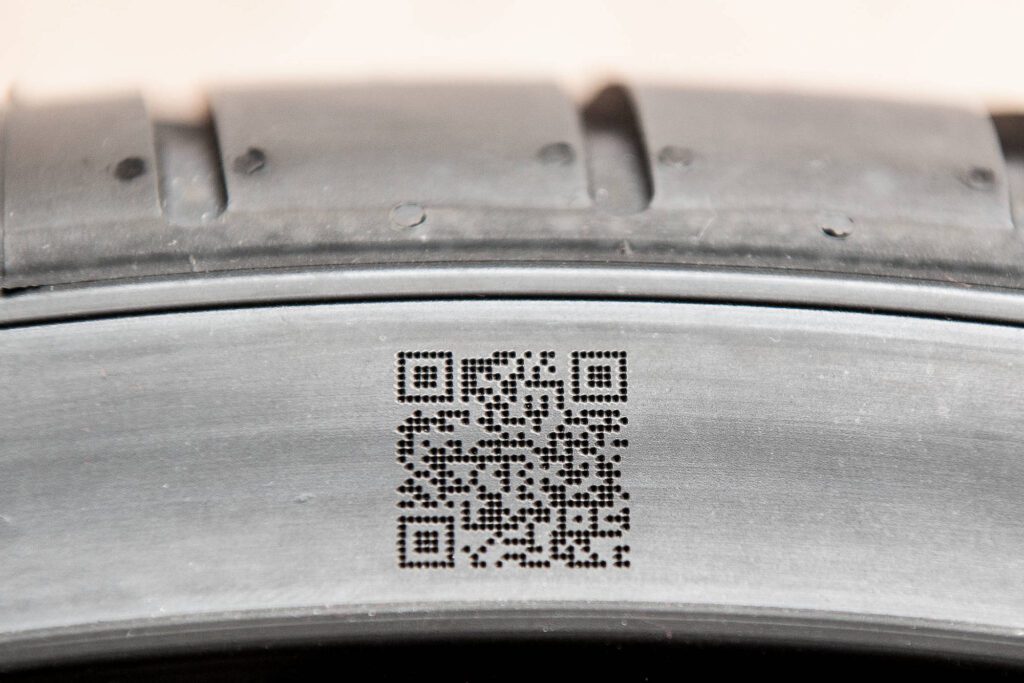
Marking Parts
Laser etching is a subtractive manufacturing process that uses a laser beam to alter the surface of an object. It is a technique used to create permanent marks on a wide range of materials by removing a portion of the surface layer. This technique is widely used in modern engineering and other fields for various applications such as marking parts, creating identification labels, and designing decorative items.
Working Principle of Laser Etching
The working principle of laser etching involves the use of a laser beam to produce a controlled burn on the surface of a material. The process begins by preparing a digital design of the desired pattern or text to be etched onto the surface. This digital design is then loaded into the computer that controls the laser etching machine.
The laser etching machine consists of a laser source, a lens to focus the laser beam, and a computer-controlled movable table or arm. The material to be etched is placed on the movable table or held by the arm. The computer then guides the laser beam across the surface of the material, following the digital design. As the laser beam interacts with the surface, it heats the material, causing it to melt and vaporize. This removal of material results in the desired pattern or text being etched onto the surface.
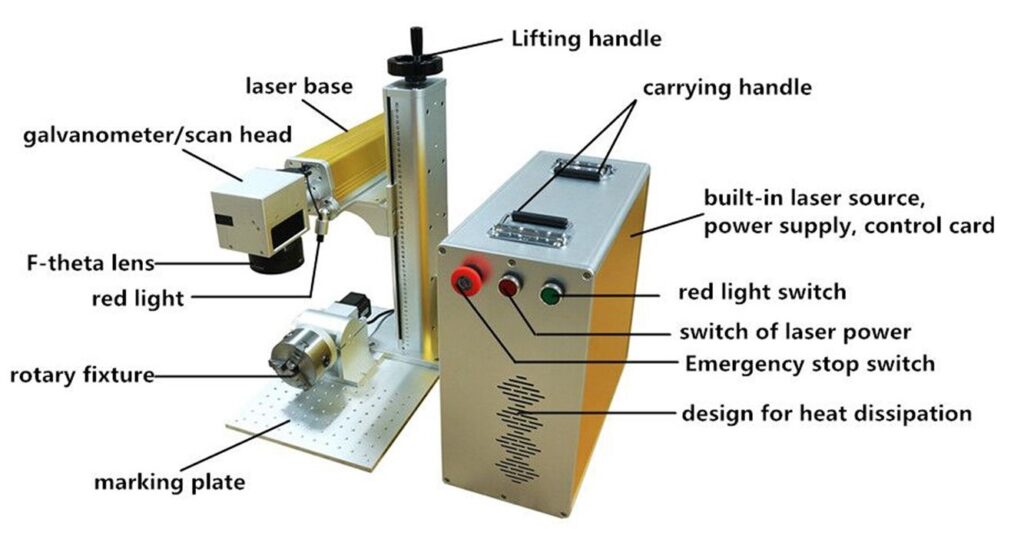
The laser used in etching is usually a CO2 laser, which produces infrared light. The wavelength of this light is absorbed by most materials, making it suitable for etching a wide range of surfaces. The power and speed of the laser can be adjusted to control the depth and width of the etch.
Why It Matters in Modern Engineering
Laser etching has become an indispensable tool in modern engineering for several reasons:
- Precision: Laser etching offers a high level of precision, enabling the creation of intricate and detailed designs. The laser beam used in etching can be as small as 0.001 inches in diameter, allowing for very fine lines and patterns to be created. This level of precision is crucial for applications in industries such as electronics, aerospace, and automotive, where parts often have complex geometries and tight tolerances.
- Speed: The laser etching process is relatively fast compared to other marking methods. The speed of the laser beam can be adjusted to suit the material and the desired etching depth. This allows for quick production of parts, reducing lead times and increasing overall efficiency.
- Versatility: Laser etching can be used on a wide range of materials, including metals, ceramics, plastics, and glass. This versatility makes it suitable for various applications in different industries. Additionally, the process does not require any physical contact with the material, making it suitable for delicate or sensitive surfaces.
- Durability: The marks created by laser etching are permanent and resistant to wear, chemicals, and environmental factors. This is essential for applications where parts are exposed to harsh conditions, such as in the automotive or aerospace industries.
- Customization: The digital design used in laser etching can be easily modified and customized, making it suitable for small-batch production or applications where each part needs to be unique.
The Process of Laser Etching: What Are the Steps?
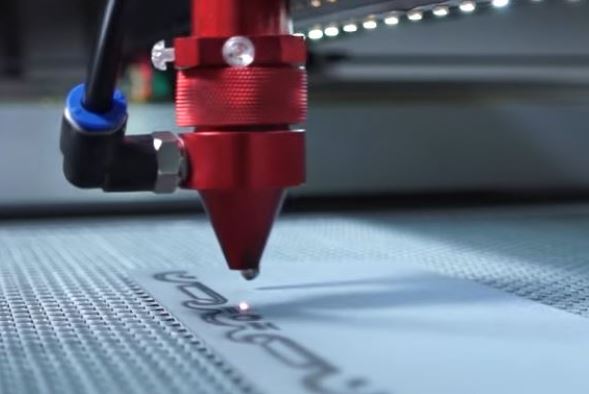
Laser etching on the aluminum part
Laser etching is a popular method for creating permanent marks on various materials’ surfaces. This process utilizes a laser beam to remove a portion of a material’s surface, leaving behind a permanent, visible mark. The operation of laser etching involves three main steps: design creation, material preparation, and the actual etching process.
Step 1: Design Creation
The first step in the laser etching process is creating the design that will be etched onto the material. This design is usually created using graphic design software. It is essential to create a design that is suitable for the material being used and the desired end result. The design is then uploaded to the computer that controls the laser etching machine. The computer uses this design to guide the laser beam during the etching process.
Step 2: Material Preparation
The next step is to prepare the material that will be etched. The material needs to be flat and securely placed on the laser etching machine’s work table. Any dust or debris on the surface of the material should be removed as it can affect the quality of the etch. Additionally, some materials may require a special coating to achieve the desired etching result. For example, metals may require a ceramic coating to create a contrast between the etched and unetched areas.
Step 3: Execution of Etching
The final step is the actual etching process. The laser etching machine uses the uploaded design to guide the laser beam across the material’s surface. The laser beam removes a portion of the material’s surface, creating the design. The depth of the etch can be controlled by adjusting the power of the laser and the speed at which it moves across the material.
Laser etching works by melting the surface of the material, causing it to expand and create a raised mark. This is different from laser engraving, which removes material from the surface, creating a recessed mark. The laser used in the etching process is usually a CO2 laser, which produces a wavelength of light that is absorbed by the material, causing it to heat up and melt. Since laser beam used in etching is very precise (typically less than 0.001 inches in diameter), it allows for the creation of highly detailed and intricate designs.
Parameters Influencing Laser Etching
Various parameters influence the outcome of the laser etching process, including the power of the laser, the speed at which the laser moves across the material, and the material itself.
- Power of the Laser: The power of the laser determines how much material is removed during the etching process. Higher power settings will remove more material, creating a deeper etch, while lower power settings will create a shallower etch.
- Speed of the Laser: The speed at which the laser moves across the material’s surface also affects the depth of the etch. Slower speeds will result in a deeper etch, while faster speeds will create a shallower etch.
- Material: Different materials react differently to the laser etching process. Some materials, like metals and ceramics, can withstand higher laser power settings and create a more pronounced etch. Other materials, like plastics and wood, may be more sensitive to the laser and require lower power settings.
Applications of Laser Etching
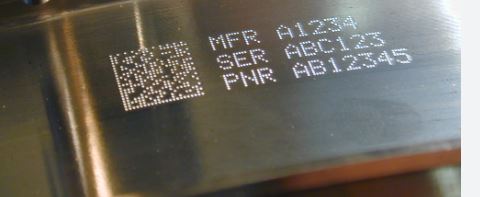
Barcode and labeling created with laser etching
Laser etching has a wide range of applications across various industries due to its precision, durability, and versatility. Here are some of the most common applications of laser etching:
Table: Laser etching applications
| Application | Description | Example | Importance |
|---|---|---|---|
| Industrial Marking and Labeling | Used for marking and labeling parts with permanent marks such as serial numbers, barcodes, QR codes, and logos. | Automotive parts, electronic components, and aerospace components marked with unique identifiers for tracking and quality control purposes. | Essential for traceability, identification, and branding purposes. |
| Medical Devices | Used to mark surgical instruments, implants, and other medical devices with important information such as part numbers, lot numbers, and manufacturer details. | Surgical instruments marked with a unique identifier to ensure they can be tracked throughout their lifecycle. | Crucial for traceability and compliance with regulatory requirements. |
| Electronic Components | Used to mark electronic components such as PCBs, semiconductors, and connectors with important information such as part numbers, lot numbers, and manufacturer details. | Semiconductors marked with lot numbers. | Essential for traceability, quality control, and compliance with industry standards. |
| Jewelry and Fashion | Used to create intricate designs and patterns on various materials and to personalize jewelry and accessories with names, initials, or special messages. | Personalized bracelets with special messages. | Enhances aesthetic appeal and personalization. |
| Promotional Products | Used to customize promotional products with company logos, names, or messages. | Pens, keychains, and water bottles customized for events and trade shows. | Effective way to promote a brand and create memorable giveaways. |
| Art and Craft | Used to create intricate designs and patterns on various materials and to create decorative items, gifts, and art pieces. | Decorative items with intricate patterns. | Facilitates creativity and artistic expression. |
| Architectural Models | Used to create detailed architectural models and to etch intricate details on various materials. | Detailed architectural models of buildings. | Creates realistic and accurate models. |
| Firearms and Knives | Used to mark firearms and knives with important information such as serial numbers, manufacturer details, and decorative designs. | Firearms marked with serial numbers and manufacturer details. | Essential for identification, traceability, and compliance with regulatory requirements. |
| Automotive Industry | Used to mark parts with important information such as part numbers, manufacturer details, and logos. | Car parts marked with part numbers and manufacturer details. | Essential for traceability, quality control, and compliance with industry standards. |
| Aerospace Industry | Used to mark components with important information such as part numbers, lot numbers, and manufacturer details. | Aerospace components marked with part numbers and manufacturer details. | Crucial for traceability, quality control, and compliance with regulatory requirements. |
| Consumer Electronics | Used to mark consumer electronics with important information such as serial numbers, manufacturer details, and logos. | Smartphones, tablets, and laptops marked for identification, traceability, and branding purposes. | Essential for identification, traceability, and branding purposes. |
Laser Etching vs. Laser Engraving
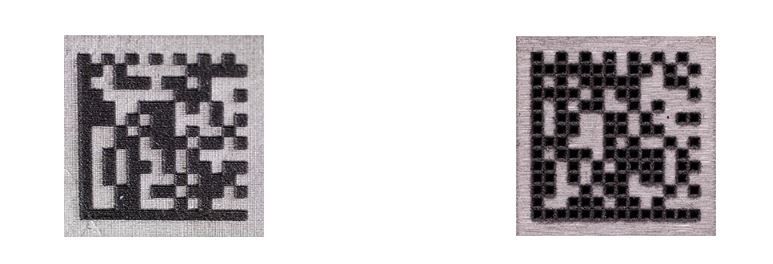
Barcode on metal created with Laser engraving & etching
Both laser etching and laser engraving are popular methods used for creating permanent marks on various materials, and both have their unique set of characteristics and applications.
Laser Engraving
Laser engraving is a process that involves removing a portion of the material surface to create a deep and permanent mark. The laser beam vaporizes the material, creating a cavity in the surface that is visible to the eye and touch. Laser engraving is suitable for various materials, including wood, plastic, metal, glass, and leather. It is commonly used for creating deep marks, such as logos, decorative designs, and identification marks.
Table: Comparison of laser etching and engraving
| Comparison Criteria | Laser Etching | Laser Engraving |
|---|---|---|
| Process | Surface-level marking by melting and expanding the material surface. | Material removal by vaporizing the surface to create a deep cavity. |
| Depth | Shallow, usually less than 0.001 inches. | Deeper, can be up to 0.125 inches depending on the material. |
| Material Suitability | Metals, plastics, ceramics, glass. | Wood, plastic, metal, glass, leather. |
| Mark Appearance | High-contrast, slightly raised mark. | High-contrast, deep mark. |
| Speed | Faster as it only modifies the surface. | Slower as it involves material removal. |
| Durability | Less durable due to shallow depth. | More durable due to deeper marks. |
| Suitable Applications | Barcodes, serial numbers, intricate designs. | Logos, decorative designs, identification marks. |
| Impact on Material | Minimal material impact. | More material impact due to material removal. |
| Post-Processing Required | Usually, no post-processing is required. | Sometimes requires cleaning to remove debris. |
| Cost | Generally more cost-effective. | Higher cost due to slower process and material removal. |
Prolean’s CNC Laser-etching Services
Prolean is a leader in providing CNC laser-etching services, offering precision and quality that is unmatched in the industry. Our state-of-the-art laser etching machines are equipped with the latest technology, ensuring accurate and consistent results every time. We offer laser etching services on a wide variety of materials, including metals, plastics, glass, ceramics, and more.
Our experienced team works closely with our clients to understand their needs and provide customized solutions that meet their specifications. Whether you need laser etching for industrial applications, personalized products, or art and craft projects, Prolean’s CNC Laser-etching Services are here to deliver exceptional results.
Conclusion
In conclusion, laser etching is a versatile and efficient technique used for creating permanent marks on a variety of materials. It has become an essential tool in modern engineering, as it enables the marking of intricate designs, serial numbers, and important information with high precision and contrast. From industrial marking and labeling to the creation of intricate designs in art and fashion, the applications of laser etching are vast and varied. Despite its similarities with laser engraving, laser etching has distinct characteristics that make it more suitable for certain applications, offering advantages such as faster processing times, minimal material impact, and high-contrast marks.
As technology continues to advance, it is expected that laser etching will find even more applications across various industries, contributing to the development of more efficient, sustainable, and innovative products.
FAQs
What is the difference between laser etching and laser engraving?
Laser etching and laser engraving are both methods of creating permanent markings on a material’s surface using a laser beam. However, laser etching is a surface-level process that removes a small amount of material, typically less than 0.001 inches, whereas laser engraving removes more material and creates a deeper mark.
Can laser etching be used on any material?
Laser etching can be used on a wide variety of materials, including metals, plastics, glass, ceramics, and more. However, it is essential to test the material first to ensure that it is suitable for laser etching and will produce the desired results.
Is laser etching permanent?
Yes, laser etching creates permanent markings on a material’s surface. The markings are resistant to wear and tear and will remain legible even after extended use.
Can laser etching be used to create colored markings?
Laser etching creates markings by removing a portion of the material’s surface, revealing the natural color of the material beneath. Therefore, the color of the markings will depend on the color of the material being etched. However, some materials, such as certain metals, can produce different colors depending on the laser settings used.
How can I get started with Prolean’s CNC Laser-etching Services?
Getting started with Prolean’s CNC Laser-etching Services is easy. Simply contact us with your requirements, and our experienced team will work with you to provide a customized solution that meets your needs




0 Comments